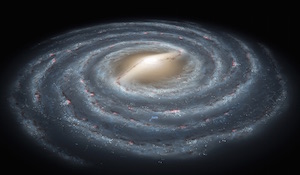Euthanizing Overholt et al.: How bad can a bad paper be?
Blog topic:
Before I get into the technical details (which will cause many of the readers to click their way out of here), I do want to say something general about the refereeing process and how it can easily break down, as it did here.
Given that there are many more people who are eager to shoot down the cosmic ray climate link than people researching it, very often I find that the criteria used to accept papers which refute the link are way more lenient than the criteria needed to accept papers that supposedly refute it. This is because the refuters don't have an incentive to find errors in refuting papers (e.g., as I demonstrated with the Shakun et al. paper supposedly finding that CO2 leads the average global temperature). This is because any paper has a much higher probability of getting refereed by the refuter camp than the proponents camp. Simple statistics.
The second comment is that I wrote them politely, it ended up with an erratum, but to save face they continued claiming the that their paper supports the erroneous claim that my original conclusions are unsubstantiated. One can show that even those leftover criticisms are plagued with errors.
Main Problem
In the their paper, Overholt et al. try to estimate previous passages through the galactic spiral arms, and compare those passages to the appearance of ice-age epochs on Earth, over the past billion years. The gravest error is that the analysis was carried out using a spiral arm pattern speed that was totally different from the range of pattern speed they actually wrote they used!They wrote that they take 10.1 to 13.7 (km/s)/kpc as the possible range for the relative motion of the spiral arm pattern speed with respect to the solar angular velocity (i.e., a nominal value of about 11.9 (km/s)/kpc). However, if one looks at the average spiral arm crossing as obtained in their analysis, it is about 100 Myr (the first of their group of 4 arm passages is at roughly at 275 Myr and their second group is at roughly 670 Myr). This implies an average spiral arm passage every (670 Myr - 275 Myr)/4 ~ 100 Myr, which is inconsistent with the above pattern speed. In fact, an average spiral arm passage every 100 Myr implies a relative pattern speed of about: $$ \Omega_\odot - \Omega_\mathrm{arm} \approx 15.4 (km/s)/kpc, $$ I am pretty sure that the source of error is the fact that they accidentally took the absolute pattern speed when calculating the spiral arm passages. For their nominal 217 km/s solar velocity at 8 kpc, one gets $\Omega_\odot = 27.1 (km/s)/kpc$, such that the absolute pattern speed obtained for the nominal 11.9 (km/sec)/kpc relative speed, is: $$\Omega_\mathrm{arm} = \Omega_\odot - (\Omega_\odot-\Omega_\mathrm{arm}) = 27.1 − 11.9 = 15.2 (km/s)/kpc$$ i.e., roughly the value I read by eye from their graph describing the spiral arm passages.
Because they accidentally took the absolute pattern speed, they obtained spiral arm crossings which are much more frequent that the climatic data or meteoritic data. If they would have taken the 10.1 to 13.7 range instead, the spiral arm passages would have been 112 to 152 Myr, which includes the ice-age epoch occurrences and the cosmic ray flux variations based on iron meteorites. The phase would have agreed as well.
I then suggested that they publish an erratum to that paper, which they did. However, to save face, they claimed that their re-calculated spiral passages are still inconsistent with the meteoritic data or with the climate record, which brings me to the additional problems still present in their analysis.
Additional Problems
A few more problems relate to the way Overholt et al. derive the spiral arm crossing (which is why even with their erratum, their manuscript is pointless).First, they take the spiral arm model of Englmaier et al. 2009, but they trace the spiral arms by eye, and as a consequence get a distorted result which gives highly unlikely “tight” clusters of 4 consecutive passages each rotation. In fact, it is so distorted that 2 consecutive arm crossings are of the same arm, which even with the radial epicyclic motion of the solar system is ridiculous.
Second, they assume that their highly asymmetric (and unlikely) spiral arm configuration should remain as such for many spiral arm passages, but because the arms are dynamic, without more information, a more reasonable assumption would have been that the arms would have tended to be separated by 90 degrees instead of the “tight” clusters of 4 consecutive passages.
Third, they didn’t consider the fact that supernovae are biased to take place about 10 to 20 million years after the spiral arm passage because of the finite lifetime of the stars that end their lives as supernova explosions.
Fourth, they don’t actually carry out any statistical analysis how likely or unlikely is it to find all the ice-age epochs as close to the estimated spiral arm passages, not that a statistical analysis would have helped any given their problematic determination of the arm passages.
Last, and perhaps most important. The cosmic ray flux can be shown using Iron meteorites to be periodic with a roughly constant 145 Myr period, and in phase with the appearance of ice-age epochs, which means that any distorted reconstruction such as that of Overholt et al. is inconsistent with the data, which they have totally ignored.

